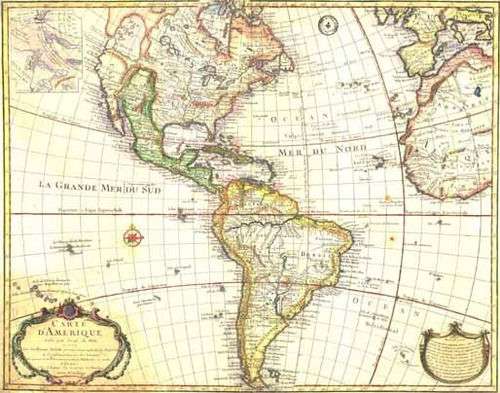Juan Pardo (explorer)
Juan Pardo was a Spanish explorer and conquistador who was active in the later half of the sixteenth century. He led a Spanish expedition through what is now North and South Carolina and into eastern Tennessee.[1] He established Fort San Felipe, South Carolina (1566), and the village of Santa Elena on present-day Parris Island, the first Spanish settlements in South Carolina. While leading an expedition deeper in-country, Pardo founded Fort San Juan at Joara, the first European settlement (1567–1568) in the interior of North Carolina.[2]
New World exploration
Pardo led two expeditions from Santa Elena into the interior of the present-day southeastern United States. The first, from December 1, 1566 to March 7, 1567, numbered 125 men and was to seek food and to establish bases among the region's indigenous people. He established Fort San Juan at Joara, a Mississippian culture center (near present-day Morganton, North Carolina) and left a garrison behind. Claiming the settlement for Spain, he renamed it Cuenca in honor of the Spanish city Cuenca.[3]
Pardo led a second expedition from September 1, 1567 to March 2, 1568 and explored the Piedmont interior and south along the Appalachian Mountains. He established additional forts that aimed to supply a land route to Zacatecas in present-day Mexico, where the Spanish had silver mines they wanted to protect. Pardo returned to Santa Elena when he learned of a French raid there.[3]
Later in 1568, the Native Americans turned against Pardo's garrisons in the interior, killing all but one of the 120 men and burning down all six forts. The Spanish did not return to the interior of North Carolina.
A stone believed to have been inscribed by Pardo or one of his men is in the collection of the Spartanburg Regional Museum of History. It is inscribed with an arrow and the year 1567. The stone (#454865) was found by a farmer in Inman, South Carolina.
Archaeological evidence
Since 1986, archaeologists working at the Berry Site near Morganton have found evidence of mound culture, burned huts and 16th-century Spanish artifacts. There is strong scholarly consensus that this is the site of Joara and Fort San Juan. In 2007, the archaeologists fully excavated one of the burned huts. They found a Spanish iron scale typical of what the expedition would have used.[4][5]
See also
Further reading
| Library resources about Juan Pardo (explorer) |
- Hudson, Charles M. (1990). The Juan Pardo expeditions: Explorations of the Carolinas and Tennessee, 1566–1568. Washington, D.C.: Smithsonian Institution Press. OCLC 20422515.
References
- ↑ . 62: 125–158. JSTOR 30146259. Missing or empty
|title=(help) - ↑ Beck, Robin A., Jr.; Moore, David G.; Rodning, Christopher B. (2006). "Identifying Fort San Juan: A Sixteenth-Century Spanish Occupation at the Berry Site, North Carolina" (PDF). Southeastern Archaeology. 25 (1): 65–77. Retrieved 2013-12-27.
- 1 2 http://www.northcarolinahistory.org/encyclopedia/165/entry
- ↑ Constance E. Rice, "Contact and Conflict", American Archaeologist, Spring 2008, pp.14 and 17, accessed 26 Jun 2008
- ↑ "Fort Tells of Spain's Early Ambitions". New York Times.
External links
- "Juan Pardo Expeditions", North Carolina History Project
